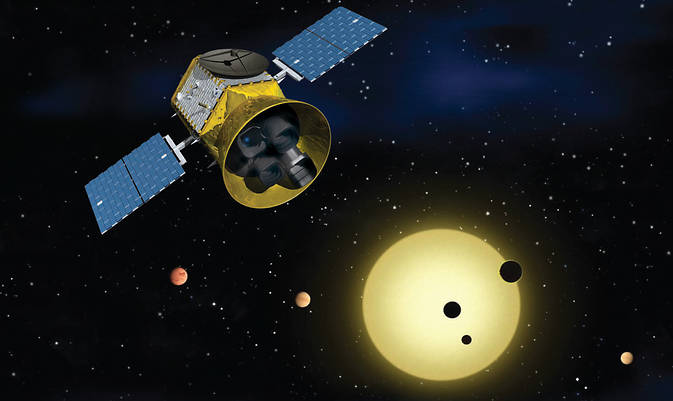NASA's exoplanet-hunting TESS space telescope moonlights in studying stars

In order to study planets, you have to look at stars, so you may as well analyze what you see.
Astrophysicists are doing just that with the data gathered by NASA's Transiting Exoplanet Survey Satellite (TESS). That spacecraft has spent a year and a half staring at bright, nearby stars, looking for the blips in brightness that can reveal alien worlds. But these dips can also represent different types of stellar hiccups, which means that TESS data is also a treasure trove for scientists studying how stars work.
"Really, TESS has been secretly all along a stellar activity and stellar variability mission," James Davenport, an astronomer at the University of Washington, said last month during the 235th meeting of the American Astronomical Society, held in Honolulu.
Related: World's largest solar telescope produces never-before-seen image of our star
TESS data takes the form of light curves, lines that each track the brightness of a star over time. An extremely quiet star with no transiting planets would look like a more-or-less flat line — the more active the star or the more transiting planets that periodically block its light, the more jagged the light curve.
"There's so many cool, wiggly things here," Davenport said of a collection of light curves from the first year of TESS observations.
Some of those cool, wiggly things are individual stars. A host of stellar features can cause light curves to act up. Flares are unpredictable bursts that cause spikes in a star's light curve. Stars rotate, so when a dark sunspot develops, it drifts across the face of the star as seen by TESS, causing the light curve to periodically dip. That rhythm lets scientists calculate how quickly the star is spinning, and perhaps its age.
Breaking space news, the latest updates on rocket launches, skywatching events and more!
Other light curves represent pairs of stars that twirl around each other. If that dance happens at a convenient angle compared to TESS's orientation, making it an eclipsing binary, the spacecraft can measure the difference in total light as it sees first two stars, then one, then both again.
That said, these dances look inconveniently similar to the TESS mission's other type of target, exoplanets. "There are so many eclipsing binaries, and I know this is particularly the bane of the other half of the TESS mission," Davenport said. "These things tend to show up as looking like really big planets, but they're amazing."
For both rotating stars and eclipsing binaries, TESS's surveying work could help scientists find a whole lot more of these types of stellar spectacles. But astrophysicists turning to TESS data are limited by the same mission constraint that lets the spacecraft study so many different stars: Every four weeks or so, the spacecraft pivots, studying a new stretch of the sky.
Such a pattern means that TESS can't really identify something like our sun, which takes 25 days to rotate, as an object of astrophysical interest. The slow-paced objects it can study are those conveniently located where TESS's imagery bands overlap, at the poles. Here, the spacecraft can study stars for months on end, potentially illuminating even more languid stars.
"I think TESS is arguably as impactful for stars as it is for exoplanets," Davenport said. "TESS is going to change what we know about nearby bright stars in our galaxy."
- NASA's planet-hunting TESS spacecraft snaps spectacular panorama of the Milky Way
- NASA's TESS exoplanet-hunting mission in pictures
- NASA's new planet-hunting telescope catches a comet and other celestial sights
Email Meghan Bartels at mbartels@space.com or follow her @meghanbartels. Follow us on Twitter @Spacedotcom and on Facebook.


Meghan is a senior writer at Space.com and has more than five years' experience as a science journalist based in New York City. She joined Space.com in July 2018, with previous writing published in outlets including Newsweek and Audubon. Meghan earned an MA in science journalism from New York University and a BA in classics from Georgetown University, and in her free time she enjoys reading and visiting museums. Follow her on Twitter at @meghanbartels.
